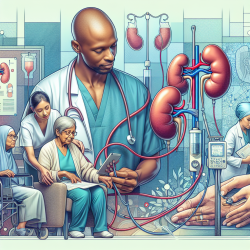Understanding UKF Tractography: A Game-Changer in Edema Management
In the realm of speech-language pathology and neurosurgical planning, the integration of cutting-edge imaging techniques is pivotal for enhancing therapeutic outcomes. One such advancement is the use of Unscented Kalman Filter (UKF) tractography, particularly in managing edema associated with brain tumors. This blog delves into the findings from the research titled Performance of unscented Kalman filter tractography in edema: Analysis of the two-tensor model, offering insights into its application for improving clinical practices.
What is UKF Tractography?
UKF tractography is a sophisticated method that enhances the visualization of white matter (WM) fiber tracts in the brain, especially in regions affected by edema. Traditional single-tensor models often fall short in accurately tracing these fibers due to the increased water content and reduced diffusion anisotropy in edematous tissues. The UKF method, however, employs a two-tensor model that fits a diffusion model to the data during fiber tracking, leveraging prior information from previous steps along the fiber.
Key Findings from the Research
The study assessed UKF tractography's performance in both synthetic diffusion MRI digital phantoms with simulated edema and retrospective data from neurosurgical patients. Here are the pivotal findings:
- Enhanced Sensitivity: The UKF two-tensor model demonstrated superior sensitivity in reconstructing edematous WM fiber tracts compared to traditional methods.
- Parameter Influence: The generalized anisotropy (GA) threshold was identified as the most effective parameter for increasing tracking sensitivity, with a reduction to 0.075 significantly extending the length of tracked fibers.
- Optimal Seeding Strategy: Seeding in the whole brain or large regions outside the edema proved most effective, ensuring a more comprehensive reconstruction of fiber tracts.
Implications for Practitioners
For practitioners in speech-language pathology and related fields, the integration of UKF tractography into clinical practice offers numerous benefits:
- Improved Surgical Planning: By providing a clearer depiction of WM tracts, UKF tractography aids in pre-operative planning, minimizing the risk of damage to critical brain areas.
- Enhanced Therapy Outcomes: Understanding the spatial relationship of tumors to WM tracts can guide therapeutic interventions, particularly in pediatric populations where preserving cognitive and language functions is crucial.
- Data-Driven Decisions: The quantitative nature of UKF tractography supports data-driven clinical decisions, aligning with evidence-based practice principles.
Encouraging Further Research
While the study provides a robust foundation for the application of UKF tractography, it also highlights the need for continued research. Practitioners are encouraged to explore further the potential of this method in diverse clinical settings and patient populations. Collaborative efforts between researchers and clinicians can drive innovations that enhance patient care.
To read the original research paper, please follow this link: Performance of unscented Kalman filter tractography in edema: Analysis of the two-tensor model.










